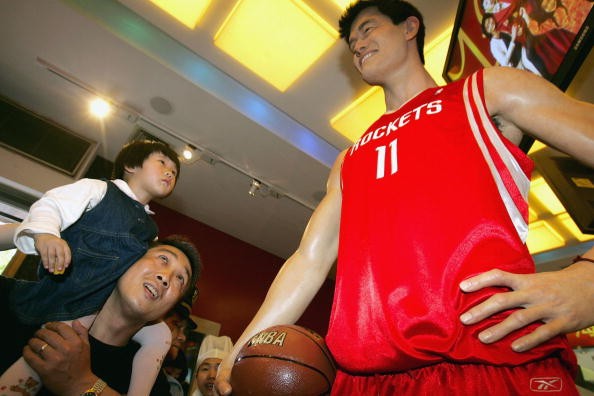The NBA made history in the past week when its Chinese investor, 35-year-old Lizhang Jiang, acquired a 5-percent stake in the Minnesota Timberwolves. With the sports having a burgeoning fan base in the world’s most populated country, this historic move--in addition to player tours and other grassroots initiatives--will only boost the NBA’s already heavy investment in China.
Earlier in June, the 2016 Kia NBA Rookie of the Year Anthony Towns, All-Star Isaiah Thomas of the Boston Celtics, and Los Angeles Lakers teammates D'Angelo Russell and Jordan Clarkson embarked on a two-week tour of the Middle Kingdom, spreading the NBA gospel to a country that's already smitten with the game.
I think I may be even more popular here [China] than I am in America. I'm known everywhere. It's not that I can't walk around, but I step outside and everyone has my jersey on--I've even seen my Kentucky jersey--and it's really cool," Towns said after the trip. "I thought I could just walk around like a normal citizen and not be recognized one bit. But boy, was I wrong."
The NBA's success in China has been the result of years of continuous investment in the country. Aside from free televised games, the league has entered a deal with Chinese Internet giant Tencent to stream games via mobile.
The NBA has also brought pre-season games to China since 2004 and is set to open the NBA Playzone, an indoor themed family-friendly entertainment center in Shanghai, according to Forbes.
The league further struck gold when Yao Ming, a Chinese-born and raised future Hall-of-Famer, established himself as a dominating center for the Houston Rockets. The NBA's bigwigs certainly had tremendous foresight to make Ming the league's ambassador, capitalizing on the remarkable impression that he made on professional basketball to reach potential Chinese fans. And the rest is history.
Other leagues can take notes of how the NBA built a massive following in China. Although the simple act of building a basketball court compared to a football field or a hockey rink cannot be ignored, major sports leagues can use events such as the Super Bowl, the World Series, and the Winter Olympics to hold events that offer Chinese fans the chance to immerse themselves to these other American sports.
Other sports leagues can also offer free clinics to schools in order to spur a youth movement of new fans.
Lastly, similar to how major league baseball has invested in academies in the Caribbean, all leagues might want to consider establishing their own academies in China to foster homegrown talent that can play professionally overseas and become an ambassador of the sport to China.
The creation of offices in Shanghai and Beijing and grassroots tours were brilliant moves made by the NBA to generate interest in basketball throughout China. In addition, exhibition games, family-oriented experiences, aned meet-and-greets to familiarize the Chinese with American athletes have also enabled the league to capitalize on a largely untapped market of more than 1 billion people.



























